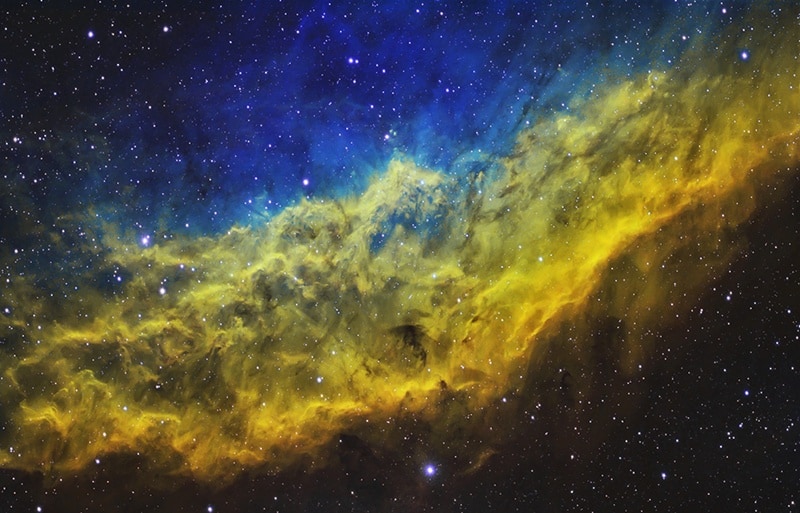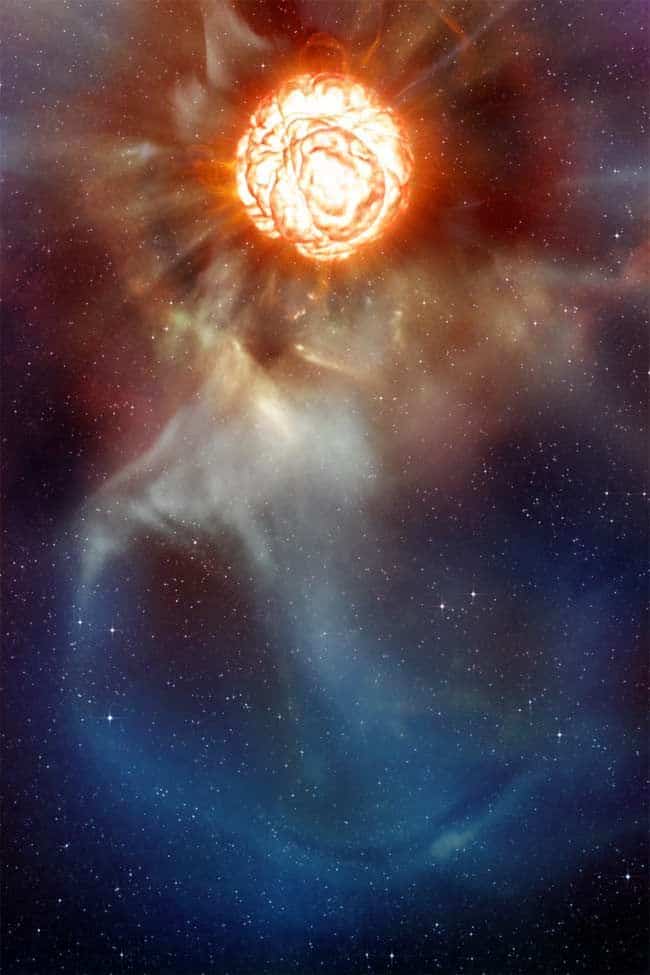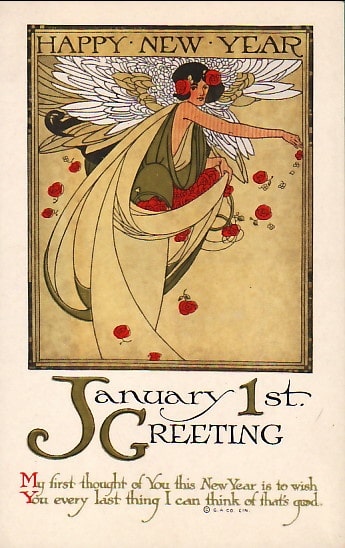Blog
https://www.youtube.com/watch?v=TSXIoM6OHPE&list=PLEB3LPVcGcWZ0hsQ5_jgSMhawAnDzy1io&index=18&t=0s
more...Palos Romances, Alborea, Tientos y Tangos.
The alboreá or albolá is a flamenco palo which is sung only in Gypsy marriage rites, and many Gypsies refuse to sing it outside this context or in the presence of non-Gypsies. It is linked to the Gypsy romance, and derives many lyrics from it.
The rhythm and guitar accompaniment is identical with the soleá. The lyrics are usually formed stanzas with four 6-syllable lines.
The California Nebula (NGC 1499) is an emission nebula in the constellation Perseus the Hero. Because of its large size, NGC 1499 is notoriously difficult to observe but rather easy to photograph. It lies about 1,000 light-years away.
The California Nebula (NGC 1499) is an emission nebula located in the constellation Perseus. It is so named because it appears to resemble the outline of the US State of California on long exposure photographs. It is almost 2.5° long on the sky and, because of its very low surface brightness, it is extremely difficult to observe visually. It can be observed with a Hβ filter (isolates the Hβ line at 486 nm) in a rich-field telescope under dark skies. It lies at a distance of about 1,000 light years from Earth. Its fluorescence is due to excitation of the Hβline in the nebula by the nearby prodigiously energetic O7 star, Xi Persei (also known as Menkib, seen at center below it in the inset at right).
The California Nebula was discovered by E. E. Barnard in 1884.
By coincidence, the California Nebula transits in the zenith in central California as the latitude matches the declination of the object.

James Carter (born January 3, 1969) is an American jazz musician. He is the cousin of jazz violinist Regina Carter.
Carter was born in Detroit, Michigan, and learned to play under the tutelage of Donald Washington, becoming a member of his youth jazz ensemble Bird-Trane-Sco-NOW!! As a young man, Carter attended Blue Lake Fine Arts Camp, becoming the youngest faculty member at the camp. He first toured Europe (Scandinavia) with the International Jazz Band in 1985 at the age of 16.
On May 31, 1988, at the Detroit Institute of Arts (DIA), Carter was a last-minute addition for guest artist Lester Bowie, which turned into an invitation to play with his new quintet (forerunner of his New York Organ Ensemble) in New York City that following November at the now defunct Carlos 1 jazz club. This was pivotal in Carter’s career, putting him in musical contact with the world, and he moved to New York two years later. He has been prominent as a performer and recording artist on the jazz scene since the late 1980s, playing saxophones, flute, and clarinets.
more...Stephen Arthur Stills (born January 3, 1945) is an American singer, songwriter, and multi-instrumentalist best known for his work with Buffalo Springfield and Crosby, Stills, Nash & Young. Stills’s solo career and bands have combined sales of over 35 million albums. Stills was ranked number 28 in Rolling Stone‘s 2003 list of “The 100 Greatest Guitarists of All Time” and number 47 in the 2011 list. He became the first person to be inducted twice on the same night into the Rock and Roll Hall of Fame. According to Neil Young, “Stephen is a genius.”
Beginning his professional career with Buffalo Springfield, he composed one of their few hits “For What It’s Worth“, which became one of the most recognizable songs of the 1960s. Other notable songs he contributed to the band were “Sit Down, I Think I Love You“, “Bluebird” and “Rock & Roll Woman”. According to bandmate Richie Furay, he was “the heart and soul of Buffalo Springfield”.
After Buffalo Springfield disbanded, Stills began working with David Crosby and Graham Nash as a trio called Crosby, Stills & Nash (CSN). Stills, in addition to writing many of the band’s songs, played bass, guitar, and keyboards on their debut album. The album sold over four million copies and at that point had outsold anything from the three members’ prior bands: the Byrds, Buffalo Springfield, and the Hollies. The album won the trio a Grammy Award for Best New Artist.
Stills’s first solo album, Stephen Stills, went gold and is the only album to feature both Jimi Hendrix and Eric Clapton. Its hit single, “Love the One You’re With“, became his biggest solo hit, peaking at number 14 on the Billboard Hot 100. A string of solo albums, and a band with Chris Hillmancalled Manassas, followed in 1972. In summer 1974 Young reunited with CSN after a four-year hiatus for a concert tour which was recorded and released in 2014 as CSNY 1974. It was one of the first stadium tours and the largest tour the band has done to date. CSN reunited in 1977 for their album CSN, which became the trio’s best-selling record. CSN and CSNY continued to have platinum albums through the 1980s.
Stills was born in Dallas, the son of Talitha Quintilla (Collard) and William Arthur Stills. Raised in a military family, he moved around as a child, and developed an interest in blues and folk music. He was also influenced by Latin music after spending his youth in Gainesville and Tampa, Florida; Covington, Louisiana; Costa Rica, where he graduated from Lincoln High School, Panama Canal Zone; and El Salvador. Stills also attended Admiral Farragut Academy in St. Petersburg, Florida, and Saint Leo College Preparatory School in Saint Leo, Florida.
more...Herbert Horatio Nichols (3 January 1919 – 12 April 1963) was an American jazz pianist and composer who wrote the jazz standard “Lady Sings the Blues“. Obscure during his lifetime, he is now highly regarded by many musicians and critics.
He was born in San Juan Hill, Manhattan in New York City, to parents from St. Kitts and Trinidad, and grew up in Harlem. During much of his life he took work as a Dixieland musician while working on the more adventurous kind of jazz he preferred. He is best known today for these compositions, program music that combines bop, Dixieland, and music from the Caribbean with harmonies from Erik Satie and Béla Bartók.
His first known work as a musician was with the Royal Barons in 1937, but he did not find performing at Minton’s Playhouse a few years later a very happy experience. The competition didn’t suit him. However, he did become friends with pianist Thelonious Monk.
Nichols was drafted into the Army in 1941. After the war he worked in various settings, beginning to achieve some recognition when Mary Lou Williams recorded some of his songs in 1952. From about 1947 he persisted in trying to persuade Alfred Lion at Blue Note Records to sign him up. He finally recorded some of his compositions for Blue Note in 1955 and 1956, some of which were not issued until the 1980s. His tune “Serenade” had lyrics added, and as “Lady Sings the Blues” became firmly identified with Billie Holiday. In 1957 he recorded his last album for Bethlehem Records.
Nichols died from leukemia in New York City at the age of 44.
more...Nearly 200 000 light-years from Earth, the Large Magellanic Cloud, a satellite galaxy of the Milky Way, floats in space, in a long and slow dance around our galaxy. As the Milky Way’s gravity gently tugs on its neighbour’s gas clouds, they collapse to form new stars. In turn, these light up the gas clouds in a kaleidoscope of colours, visible in this image from the NASA/ESA Hubble Space Telescope.

Troy Andrews (born January 2, 1986), also known by the stage name Trombone Shorty, is an American musician, producer, actor and philanthropist from New Orleans, Louisiana. He is best known as a trombone and trumpet player but also plays drums, organ, and tuba. He has worked with some of the biggest names in rock, pop, jazz, funk, and hip hop. Andrews is the younger brother of trumpeter and bandleader James Andrews and the grandson of singer and songwriter Jessie Hill. Other musical family members are cousins Glen David Andrews and the late Travis “Trumpet Black” Hill. Andrews began playing trombone at age four, and since 2009 has toured with his own band, Trombone Shorty & Orleans Avenue.
more...Ari Brown (born February 1, 1944) is an American jazz tenor saxophonist and pianist.
Brown grew up in Chicago and attended Wilson College, where he met musicians such as Jack DeJohnette, Henry Threadgill, Roscoe Mitchell, and Joseph Jarman. He played piano in R&B and soul outfits into the 1960s, then switched to saxophone in 1965. He joined the AACM in 1971, and also played with The Awakening in the early 1970s. In 1974 he lost several teeth in a car crash, and temporarily switched to piano again until he recovered. He played sax later in the 1970s with McCoy Tyner, Don Patterson, and Sonny Stitt. In the 1980s, he worked with Lester Bowie, Von Freeman, Bobby Watson, and Anthony Braxton, and in 1989 he became a member of Kahil El’Zabar‘s trio.
more...Mehmet Barış Manço (born Tosun Yusuf Mehmet Barış Manço; 2 January 1943 – 1 February 1999), known by his stage name Barış Manço, was a Turkish rock musician, singer, songwriter, composer, actor, television producer and show host. Beginning his musical career while attending Galatasaray High School, he was a pioneer of rock music in Turkey and one of the founders of the Anatolian rock genre. Manço composed around 200 songs and is among the best-selling and most awarded Turkish artists to date. Many of his songs were translated into a variety of languages including English, French, Japanese, Greek, Italian, Bulgarian, Romanian, Persian, Hebrew, Urdu, Arabic, and German, among others. Through his TV program, 7’den 77’ye (“From 7 to 77”), Manço traveled the world and visited most countries on the globe. He remains one of the most popular public figures of Turkey.
more...Little Smokey Smothers (January 2, 1939 – November 20, 2010) was an African-American Chicago blues guitarist and singer. His elder brother was the bluesman Otis “Big Smokey” Smothers (died 1993), with whom he was sometimes confused.
Albert Abraham “Abe” Smothers was born in Tchula, Mississippi, learned to play the guitar at the age of 15, and relocated to Chicago two years later. He soon appeared on stage, playing with Arthur “Big Boy” Spires, Magic Sam, Otis Rush and Lazy Bill Lucas.[4] In 1958 he joined up with Howlin’ Wolf, and he accompanied Wolf in a recording session for Chess Records the following year. Tracks Smothers contributed to include “I’ve Been Abused”, “Howlin’ for My Darling”. and “Mr. Airplane Man”.
In 1961 he founded Little Smokey Smothers and the Pipeplayers. He later met Paul Butterfield and became a founding member of the Paul Butterfield Blues Band. He was replaced in the band by Elvin Bishop but developed a friendship that lasted a lifetime.
more...The supergiant star Betelgeuse has a vast plume of gas almost as large as our Solar System and a gigantic bubble boiling on its surface, shown in this artist’s impression. Why is Betelgeuse fading? No one knows. Betelgeuse, one of the brightest and most recognized stars in the night sky, is only half as bright as it used to be only five months ago. Such variability is likely just normal behavior for this famously variable supergiant, but the recent dimming has rekindled discussion on how long it may be before Betelgeuse does go supernova. Known for its red color, Betelgeuse is one of the few stars to be resolved by modern telescopes, although only barely. The featured artist’s illustration imagines how Betelgeuse might look up close. Betelgeuse is thought to have a complex and tumultuous surface that frequently throws impressive flares. Were it to replace the Sun (not recommended), its surface would extend out near the orbit of Jupiter, while gas plumes would bubble out past Neptune. Since Betelgeuse is about 700 light years away, its eventual supernova will not endanger life on Earth even though its brightness may rival that of a full Moon. Astronomers — both amateur and professional — will surely continue to monitor Betelgeuse as this new decade unfolds. 640 ly distant.

January 1 1985 Sekou Kouyate started off touring internationally with his parents, and then with his cousin Ba Cissoko, with who he gained his international reputation as one of the worlds best electric Kora players. The Guinean Kora virtuoso, singer and composer, invented the electrified Kora at the amazing age of 12 – and went on to pioneer the sound with Wa Wa pedals, fast riffs, experimental distortions and rock and jazz-influenced playing. The multi-awarded Kouyate’s music is rooted in his West African traditions and influenced by the contemporary Blues, Soul, Funk and Jazz, that has also been his early inspirations. Sekou´s sound, mode of playing and the invention of the electric Kora, has inspired a whole new generation of Kora players.
Not only a great master of the classical musical tradition, Sekou Kouyate also amplifies his instrument and distorts the sound with wah wah pedals, the pioneering idea he got at the age of 12, and that set new standards for West African traditional music to enter the stages of contemporary music. Yet preserving the virtues and techniques of the beautiful instrument, and the knowledge he has proudly inherited from his father, M´Bady Kouyate, and while you know it’s still a Kora, the things he does with it, turn it on its head; it’s little wonder he’s been called the Jimi Hendrix of the instrument. The sound becomes totally new, exciting waterfalls of notes that are palpably thrilling.
He has been called a “Musical Genius” and “The most exiting musician to have come out of the New Generation of the African Continent” and “Worlds best Kora player of his Generation”. Constantly curious and freely experimenting with new sounds, Sekou’s ideas have many sound layers that he extracts from this rich instrument, with its endless possibilities for complex combinations of tones and polyrhythms, and which he performs with great individual expression. Singing with his velvet soft, rich voice, and performing with such abundance of feeling and technique, it is always an emotionally rewarding experience to enjoy Sekou Kouyate´s music. His music is a groovy, soulfull mix of classical Mandingo, and details of Blues, Flaminco, Soul, Jazz and Afro Pop. Hard to descirbe in few terms, Sekou Kouyate has created a music style of its own.
more...
Alpha Blondy (born Seydou Koné; 1 January 1953 in Dimbokro, Ivory Coast) is a reggae singer and international recording artist. Many of his songs are politically and socially motivated, and are mainly sung in his native language of Dioula, French and in English, though he occasionally uses other languages, for example, Arabic or Hebrew.
First son of a family of eight children, Seydou Koné was raised by his grandmother, growing up in what he described as “among elders”, which later was to have a big impact on his career. In 1962, Alpha Blondy went to join his father in Odienné, where he spent ten years, attended Sainte Elisabeth High School, and was involved in the Ivory Coast students movement. He formed a band in high school, but this hobby affected his schooling and he was expelled due to poor attendance. His parents sent him to study English in Monrovia, the capital city of neighboring country Liberia in 1973. He spent thirteen months there and moved to the United States to improve his English.
After various TV shows for Kassi, Blondy recorded his first solo album in 1982, entitled Jah Glory. This album was to have enormous success and would become later a symbol of resistance because of the song “Brigadier Sabari,” which documents his experience of being arrested in Abidjan in the 1980s and his subsequent mistreatment by the police. Alpha Blondy became a big star in Abidjan with his African twist of Reggae music, becoming in the eyes of his fans “the Bob Marley of Africa”. Alpha Blondy is spiritual, political and positive just like Marley himself, and recorded a cover of Bob Marley’s song “War“. In order to reach more people with his message, he chose to sing in many languages: English; French; Baoulé, and his native language – Dioula.Later, he also brought new instrumentation to his brand of reggae such as the violin and cello.
Soon, the fame of Alpha Blondy spread to Europe. Following the success of an EP entitled Rasta Poué, he went to Paris in 1984 to make his second album, Cocody Rock, with the label Pathe Marconi. The “Bob Marley of Africa” travelled to the island of Jamaica and recorded the title track of this album with Marley’s backing group, The Wailers.
Back home in 1985, Blondy went into the studio to record “Apartheid is Nazism“, a call for the end of apartheid. In 1986, he recorded “Jerusalem” at Tuff Gong studios in Jamaica, again with The Wailers featuring legendary Aston “Family Man” Barrett. Blondy tried to promote unity between the religion of Islam, Judaism and Christianity. He drew his arguments and inspiration from his own diverse knowledge of the Bible, the Quran, and the Torah. That same year, he sang in Hebrew during a concert in Morocco. At this point, he was continuously touring. His new album Revolutionhad a lighter, gentler sound; this album featured cellos in the instrumentation, and the line-up included veteran Ivory Coast singer Aicha Kone. The album also included “Jah Houphouët parle”, a long speech by Ivory Coast president Félix Houphouët-Boigny with only the most minimal beat behind it.
Blondy spent the years 1987–89 giving concerts and recording SOS Guerre Tribale in Abidjan. This was promoted by Blondy himself, as he was distancing himself from Pathe Marconi at this stage. This was not to be a real success but it did not deter Blondy and in 1991 he returned to Europe for a concert tour and to record his famous album Masada with the help of musical legends such as Bocana Maiga and UK reggae producer Dennis Bovell. The album, with its hit single “Rendez Vous”, was a huge success, and Blondy was later to receive his first Gold Disc in Paris.
At the beginning of 1993, worn out from a world tour, Blondy succumbed to depression and was taken into an institution for psychiatric help. But as his health recovered he recorded the album Dieu(“God”), on which he appears more spiritual and religious, on tracks such as “Heal Me”, about his illness and recovery.
more...
More Posts
- Lovie Austin Day
- World Music with Kanda Bongo Man
- Daily Roots with Lee Scratch Perry
- Club Calabash Performance 9-18-20
- Surviving the Pandemic and Realizing Racial Justice
- The Cosmos with Arp 78
- Emily Remler Day
- Steve Marcus Day
- Rocío Jurado Dia
- Louis Myers Day
- Flamenco Fridays with Sabicas
- Daily Roots with Bob Marley
- Surviving the Pandemic and Realizing Racial Justice
- The Cosmos with Sagittarius A
- Lalgudi Jayaraman Day
- Earl May Day
- JackMcDuff Day
- Hank Williams Day
- Louis Nelson Day
- World Music with the National Arab Orchestra w/ Lubana Al Quntar & Mai Farouk
